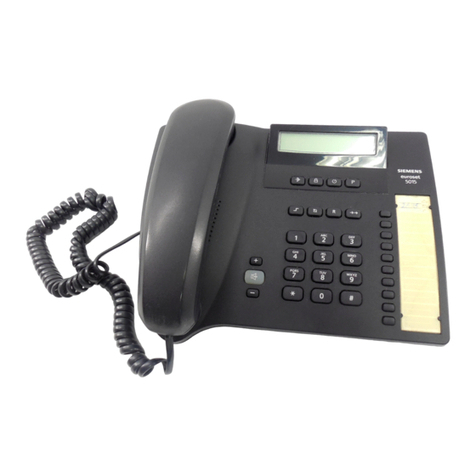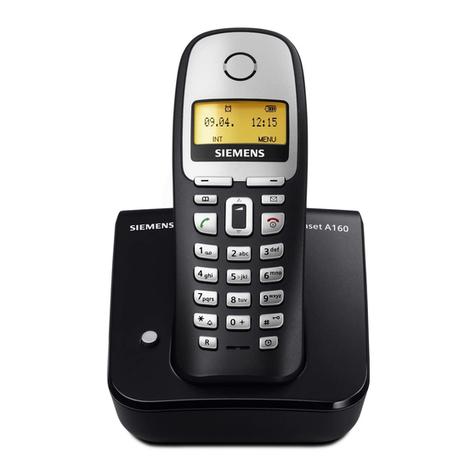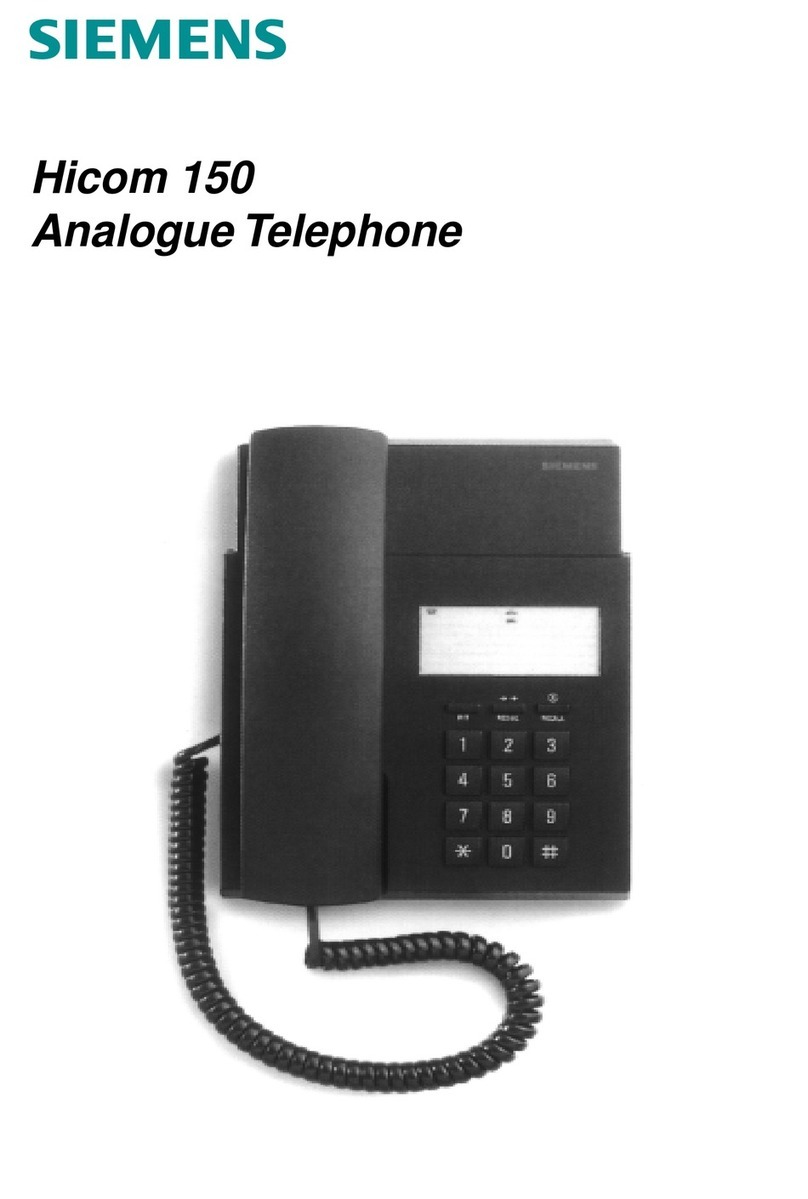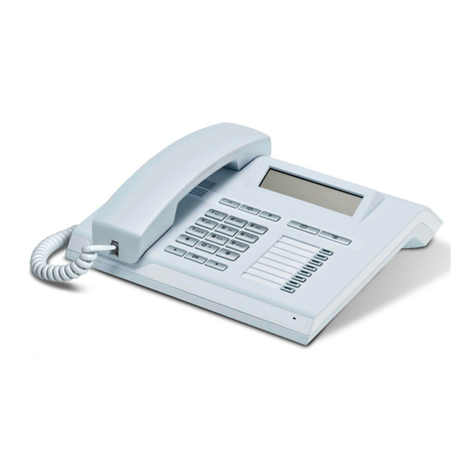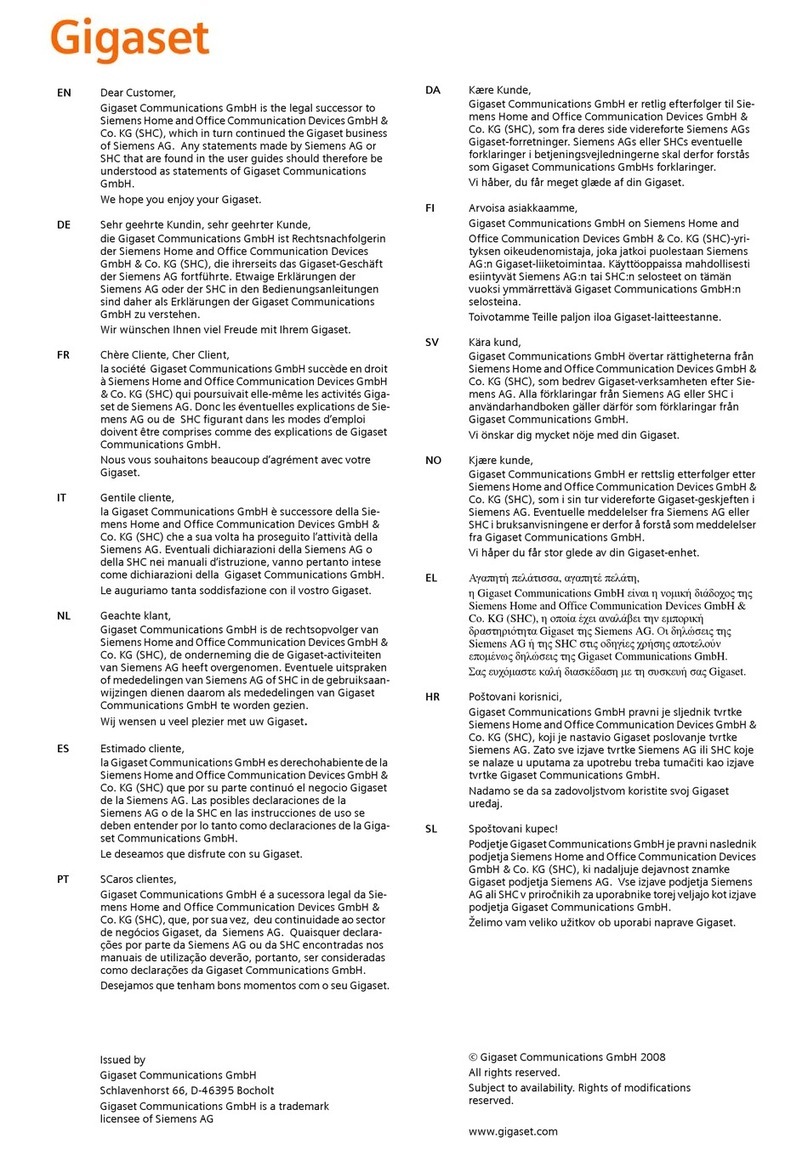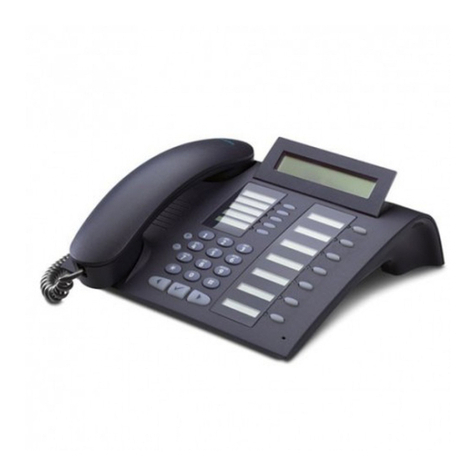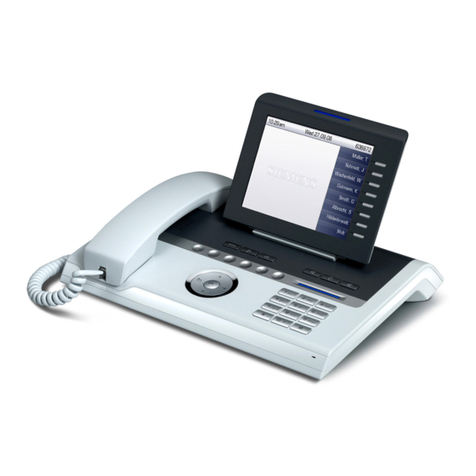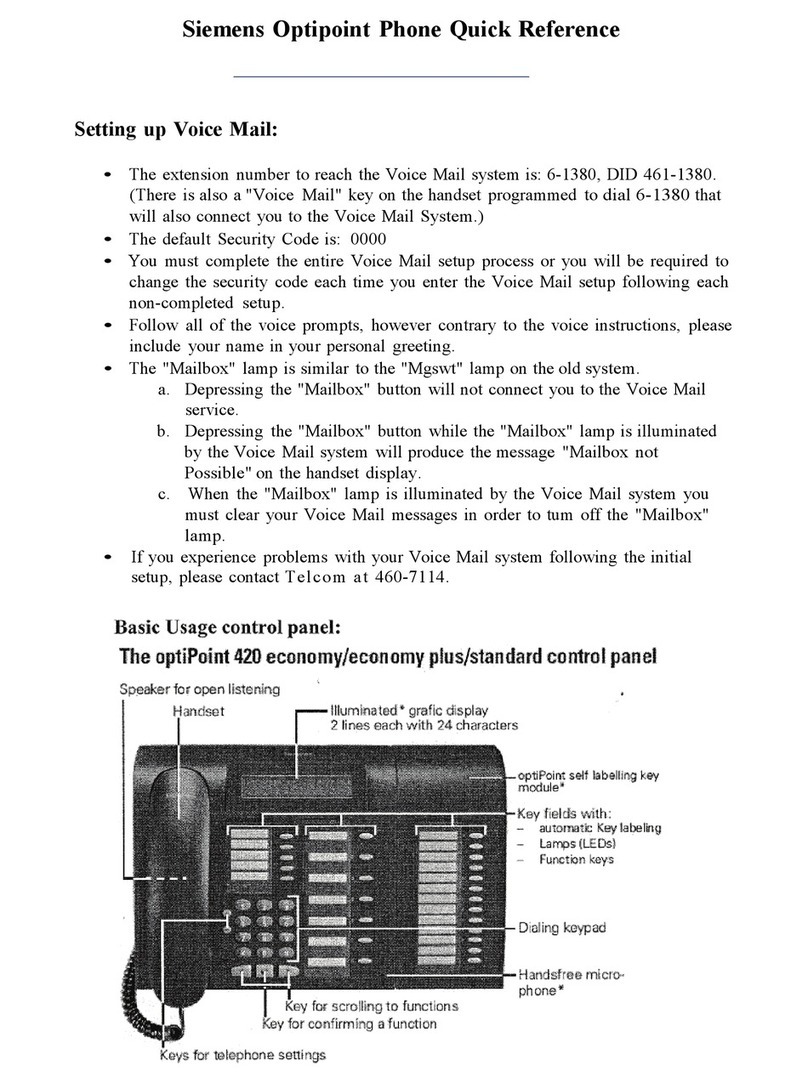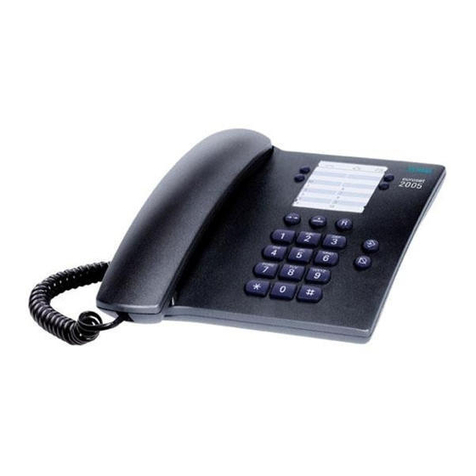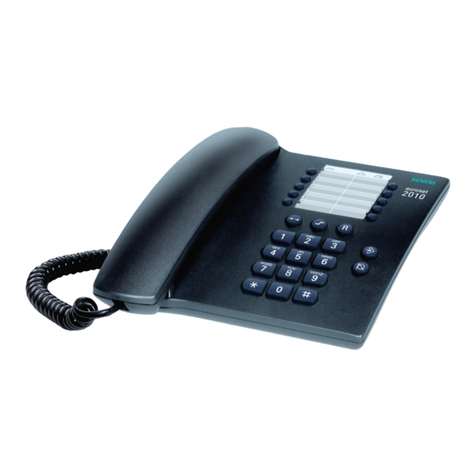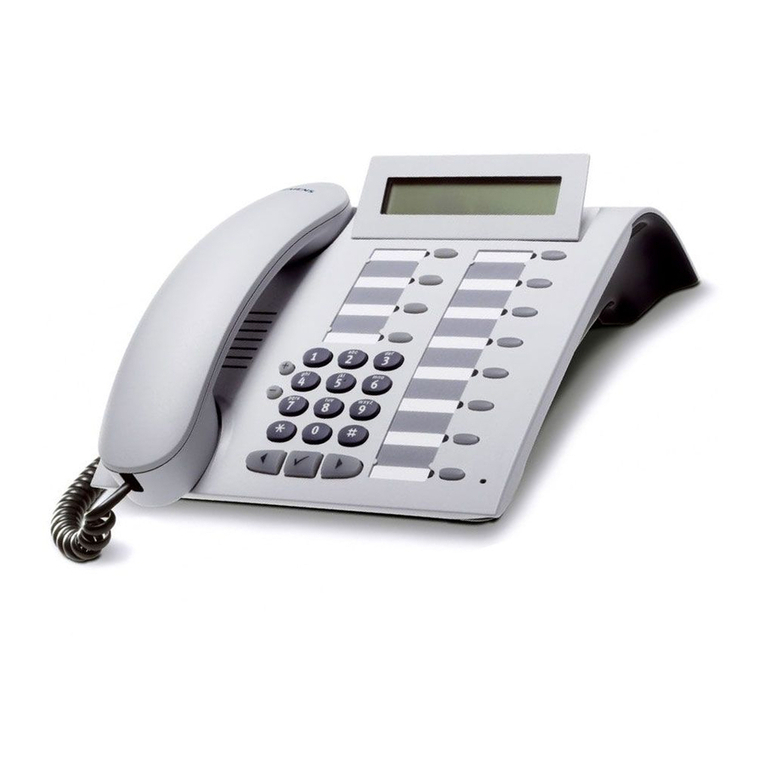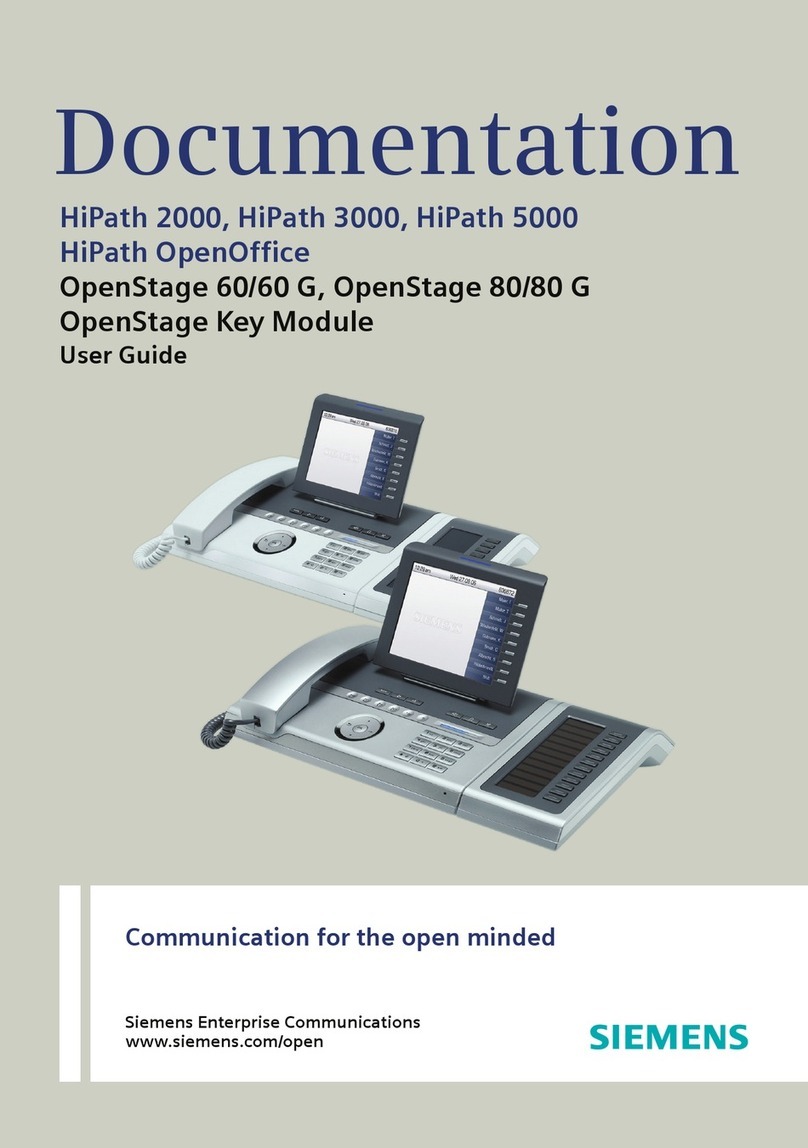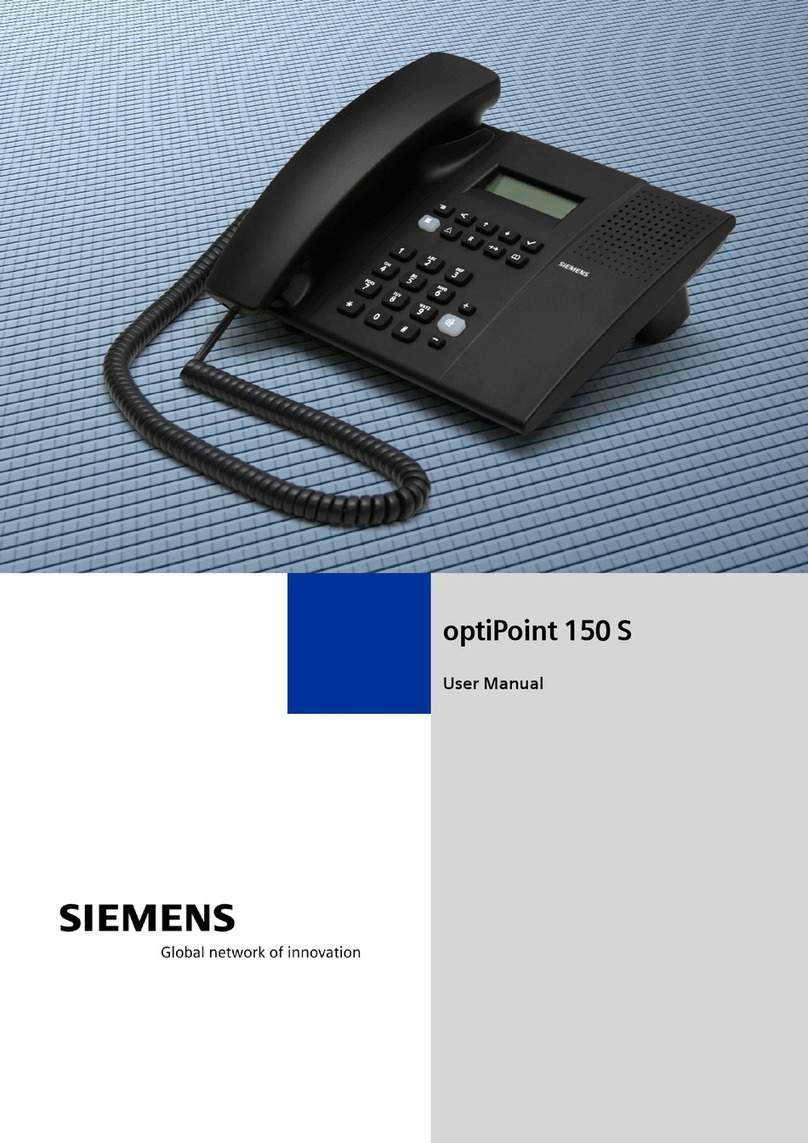
&RQWHQWV
7
77
7
$FFHVVLQJ#)XQFWLRQV 1#1#1#1#1#1#1#1#1#1#1#1#1#1#1#1#1#1#1#1#1#1#1#1#1#1#16
... With Codes . . . . . . . . . . . . . . . . . . . . . . . . . . . . . . . . . . . . . . . . . . . . . 3
Ø%DVLF#DQG#(QKDQFHG#)XQFWLRQV
0DNLQJ#DQG#$QVZHULQJ#&DOOV #1#1#1#1#1#1#1#1#1#1#1#1#1#1#1#1#1#1#1:
Answering a Call . . . . . . . . . . . . . . . . . . . . . . . . . . . . . . . . . . . . . . . . . . . 7
Using Call Waiting . . . . . . . . . . . . . . . . . . . . . . . . . . . . . . . . . . . . . . . . . . 7
Accepting a Specific Call for Your Colleague. . . . . . . . . . . . . . . . . . . . . . 9
Using Mailboxes . . . . . . . . . . . . . . . . . . . . . . . . . . . . . . . . . . . . . . . . . . . 9
Using Timed Reminders . . . . . . . . . . . . . . . . . . . . . . . . . . . . . . . . . . . . . 9
Turning Do Not Disturb On and Off. . . . . . . . . . . . . . . . . . . . . . . . . . . . 10
Trace Call: Identifying Anonymous Callers . . . . . . . . . . . . . . . . . . . . . . 10
Answering Calls from the Entrance Telephone and Opening the Door. 10
0DNLQJ#&DOOV1#1#1#1#1#1#1#1#1#1#1#1#1#1#1#1#1#1#1#1#1#1#1#1#1#1#1#1#1#1#1#1#145
Dialing Numbers . . . . . . . . . . . . . . . . . . . . . . . . . . . . . . . . . . . . . . . . . . 12
Caller ID Suppression . . . . . . . . . . . . . . . . . . . . . . . . . . . . . . . . . . . . . . 12
Talking to Your Colleague With a Speaker Call . . . . . . . . . . . . . . . . . . . 13
Activating Tone Dialing (DTMF Suffix Dialing) . . . . . . . . . . . . . . . . . . . 13
Automatic Connection Setup (Hotline) . . . . . . . . . . . . . . . . . . . . . . . . . 13
Reserve Trunk . . . . . . . . . . . . . . . . . . . . . . . . . . . . . . . . . . . . . . . . . . . . 14
Assign Station Number . . . . . . . . . . . . . . . . . . . . . . . . . . . . . . . . . . . . . 14
Associated Dialing/Dialing Aid . . . . . . . . . . . . . . . . . . . . . . . . . . . . . . . . 15
&DOOLQJ#0XOWLSOH#3DUWLHV#
6LPXOWDQHRXVO\1#1#1#1#1#1#1#1#1#1#1#1#1#1#1#1#1#1#1#1#1#1#1#1#1#1#1#1#1#1#149
Calling a Second Party (Consultation Hold; not for all ISDN Telephones) .
16
Conducting a Conference (not for all ISDN Telephones) . . . . . . . . . . . . 17
Transferring a Call (not for all ISDN Telephones). . . . . . . . . . . . . . . . . . 18
Parking a Call (not for all ISDN Telephones) . . . . . . . . . . . . . . . . . . . . . 19
Picking up (Retrieving) a Held Call. . . . . . . . . . . . . . . . . . . . . . . . . . . . . 19
0DNLQJ#&DOOV#WR#6WRUHG#'HVWLQDWLRQV 1#1#1#1#1#1#1#1#1#1#1#153
Using Station and System Speed-Dial Numbers . . . . . . . . . . . . . . . . . . 20
&KHFNLQJ#DQG#$VVLJQLQJ#&DOO#&KDUJHV1#1#1#1#1#1#1#1#1#1#154
Dialing with Call Charge Assignment . . . . . . . . . . . . . . . . . . . . . . . . . . 21
oi.book Seite 4 Mittwoch, 14. März 2001 3:33 15

